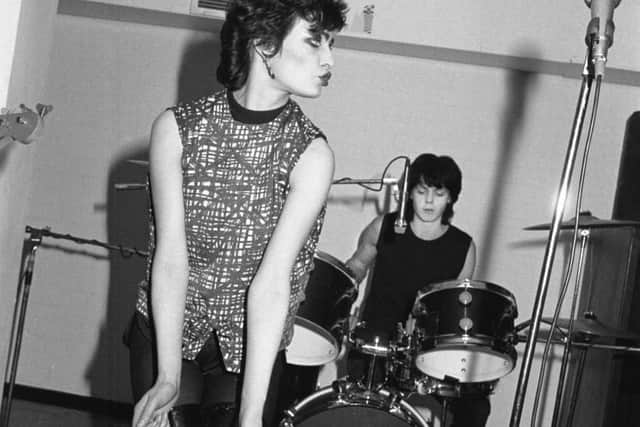How Sheffield's Limit Club compared to Planet X in Liverpool and the Phono in Leeds
and live on Freeview channel 276
A subculture that had all the hallmarks of being a passing fad, goth has proven to be far more than that. Most youth cults have a short shelf life, but goths have bucked that trend. Many of the first-generation followers are near pensionable age, but they’re still staunch fans.
Goth had a low barrier to entry - black hair dye, an ability to look moody, and a passing knowledge of Victorian horror were all that was needed. The movement fused elements of punk, glam, and metal. It first grew out of left of centre post-punk bands in the early 1980s, with groups like Alien Sex Fiend, Sex Gang Children, and Sisters of Mercy being the flag bearers for this ‘new’ movement with its roots in retro horror.
Advertisement
Hide AdAdvertisement
Hide AdFollowers were generally peace-loving and didn’t rock the status quo. They were far more concerned with where their next lager and black was coming from and whether the gents’ toilet had a mirror or not.


In the early days, the north of England was a stronghold of clubs that became a second home for the movement. Places like Sheffield’s Limit, Planet X in Liverpool, and the Phono in Leeds were hugely popular. But who’d have thought the genre would have stood the test of time and would still be with us — largely untouched — nearly 45 years later?
The goth movement has its vampish tentacles wrapped around much of the modern world. In the UK, the epi-centre is the Whitby Goth Fest, held in the former home of Dracula writer Bram Stoker.
Many of the first wave of goth rockers are still making live appearances on the circuit, including The Mission (with Sheffield's own Simon Hinkler), Sisters of Mercy, and Sex Gang Children. The Cure and its frontman Robert Smith are goth personified, inspiring countless followers over the years. The band has remained popular throughout the decades and continues to perform to this day, with a loyal fanbase eagerly following their every move.
Advertisement
Hide AdAdvertisement
Hide AdThe goth movement has also made an impact in other areas of popular culture, with its influence felt in fashion, art, and literature. Its legacy is a testament to the enduring appeal of escapism, creativity, and self-expression, and it shows no signs of slowing down anytime soon.
Indeed, World Goth Day, celebrated every year on May 22nd, is a testament to the enduring popularity of the subculture. The day serves as a celebration of all things goth, with events and gatherings taking place around the world to mark the occasion.
In conclusion, the goth movement has proven to be far more than just a passing fad, enduring for decades and inspiring countless followers along the way. Sheffield’s Limit Club was an early champion of the movement, and the movement’s legacy continues to be felt around the world. For those curious about the subculture, World Goth Day is the perfect opportunity to embrace your dark side and immerse yourself in this enduring movement's music, fashion, and art.
•Content submitted by Neil Anderson. Check out the story of the Limit in ‘Take It to The Limit’ available from: www.dirtystopouts.com
